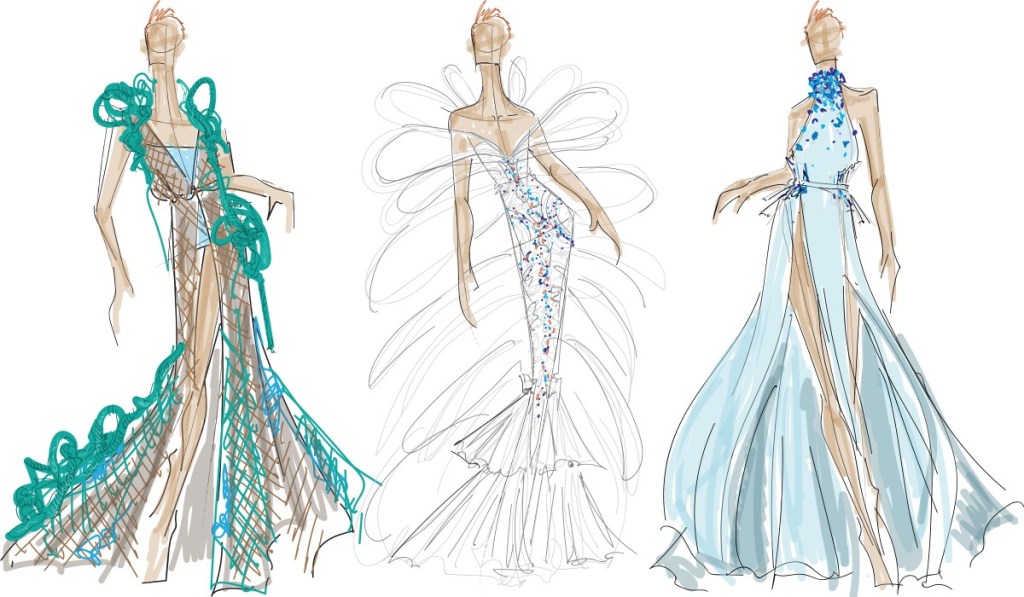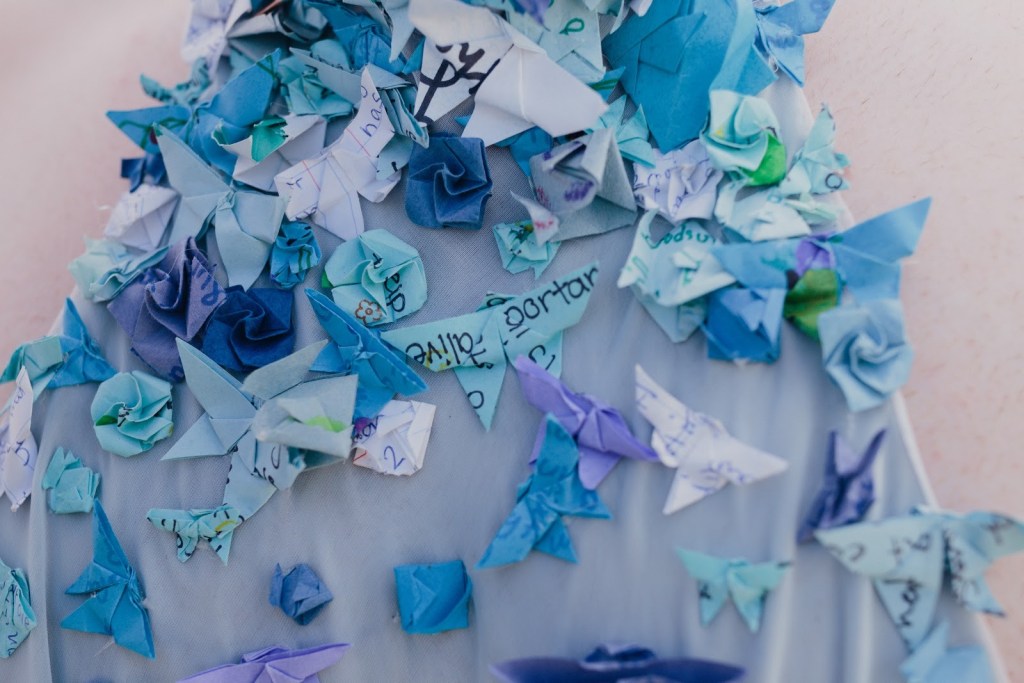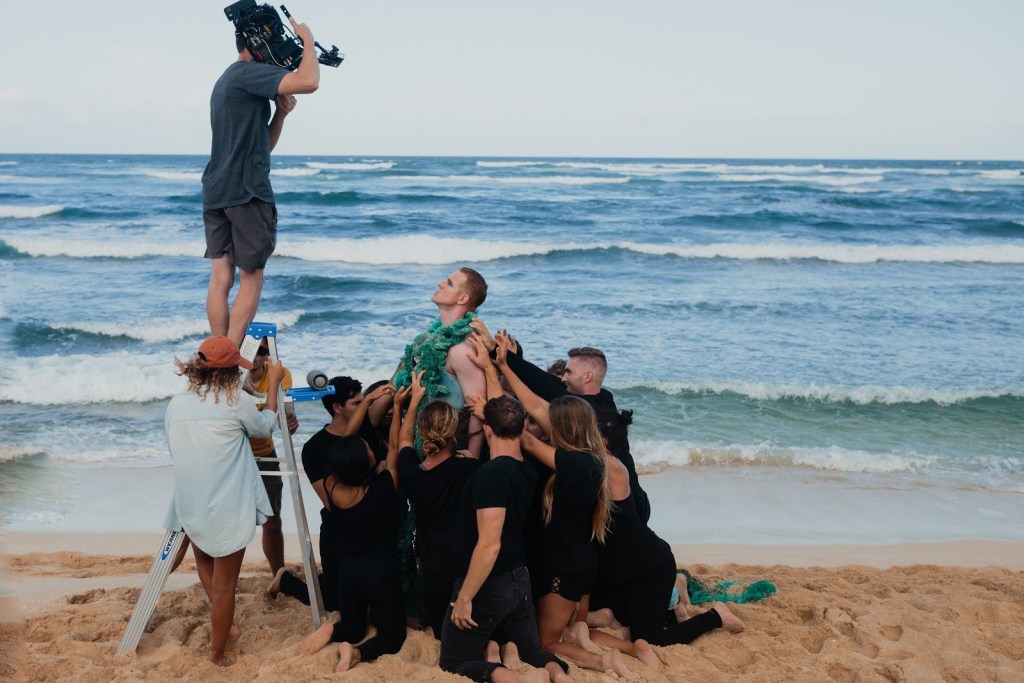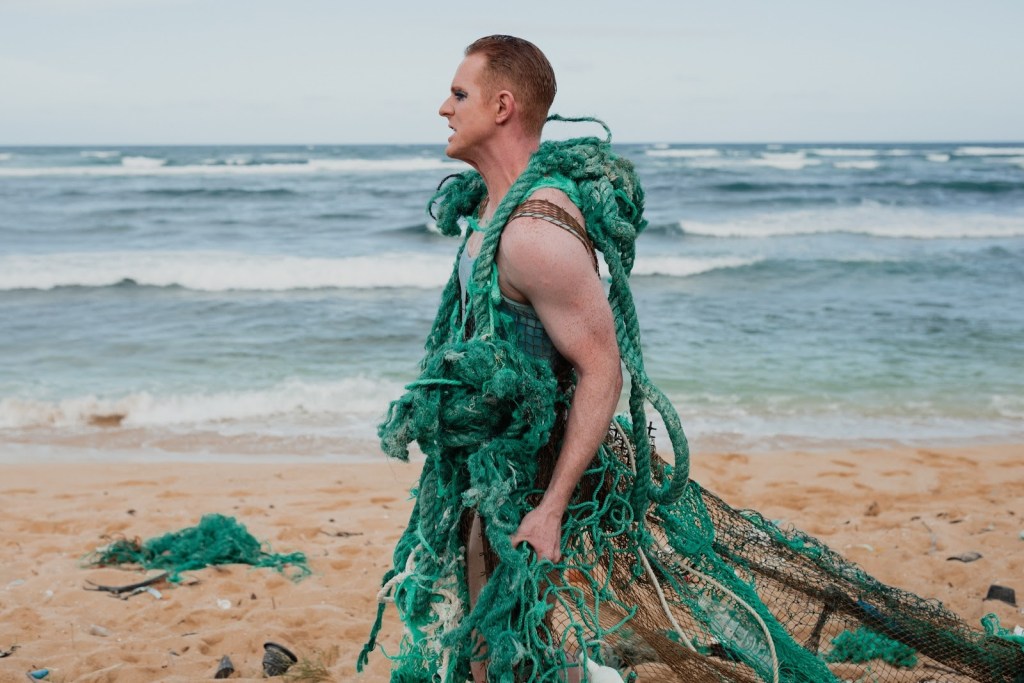Who would combine a powerful spoken-word piece and high fashion made of trash to raise awareness about the plastics problem in Hawaii? Pattie Gonia, an outdoor-inspired drag queen and environmental activist who’s the brainchild of photographer and Instagram sensation Wyn Wiley, that’s who.
In November, REI paired up with Wiley to produce “Dear Mother Nature,” in which the social media phenomenon travels to Oahu, Hawaii, to understand how pollution from single-use plastics is affecting the Hawaiian islands. Wiley partners with sustainable fashion designer Angela Luna of ADIFF to create three dresses in the film that help illustrate the plastics crisis, which Pattie Gonia then wears in the spoken word poem “Everything to Lose.”
We sat down separately with both Wiley and Luna to learn how fashion can illuminate pressing environmental issues.
Responses have been edited and condensed for clarity.
Luna on how they met. It started when Pattie posted a photo of herself wearing this really extravagant tent dress. I messaged her that my company ADIFF makes an actual jacket that turns into a tent, and that we should put her in it. She styled it as a dress for an ambassador event, wearing it under a custom piece we made from REI sleeping bags. Next, he messaged me about this project.

Luna’s original sketches. The net dress on the left symbolizes the pollution fishing has contributed to the reefs around Oahu. The center look explores the increasing amounts of plastics ingested by aquatic life. And the final dress, on the right, transforms love letters and apologies to Mother Nature into hope.
Our original idea was to send one dress to Hawaii. But then I sent [Wyn] a few sketches and he was like: “I love all of them. Maybe there’s a way that we can do all three and also incorporate you into this in a little bit of a larger way.” Ten days later, I was on a flight to Hawaii.
Wiley on art as a way to raise consciousness about social and environmental issues. I think the clothes we wear and the performance we give everyday, not just in videos like this but also in our daily lives, communicate what we care about. My mom always said, “Actions speak louder than words.” So we wanted to make sure in the documentary we showed our actions and our commitments to changing how [plastic pollution] affects daily life.
Wiley on how learning about plastics in Hawaii informed the dresses. I think the biggest takeaway for me was just how many different types of plastic are showing up on the coast of Hawaii in general. Before the trip, I didn’t know microplastics were even a thing or that fishing nets were made of plastic. It was really cool to incorporate all types of plastics—from microplastics that created a makeup look to larger pieces with the net dress.

Luna working on the construction of the plastic bag dress.
Wiley on how the net dress shifted in Hawaii. This dress started as a ghost net, a ball of all different kinds of rope and nets that washes up close to shore on beaches and destroys reefs. In the beginning, the net dress had a pants piece with it, but we decided to scrap that to keep a more feminine form. The video team used close-up shots to show the pieces of plastic attached to the net itself, which was the same form that we found it in. We wanted the dress to match as much of what we were finding in natural environment itself.
Luna on the plastic bag dress. The plastic bag dress was actually the one that I was most excited about—and I easily spent 150 hours on it before actually landing in Hawaii. One of the things that resonated with me so much is how plastic is included in all of the seafood we consume now [because of pollution]. I was looking at fish skeletons and the concept [for the dress] came from a butterfly fish silhouette, which showed up as these giant loops of bags. This dress was the only one that didn’t change too much from when I originally sketched it.
Luna on the construction process. I have a degree in fashion design, and there are certain things we were taught—number one being to never use hot glue when making garments. So for the first seven days of the project, I was in my studio in New York hand-sewing every single bag. My fingers were raw to the point where I couldn’t open my phone because [my hands] were so bloody and stabbed. At that point I decided to switch to hot glue. For that, I want to formally apologize to all my professors! That’s when all my physical ailments turned from cuts to burns (not much better)!

A close-up detail of the love-letter dress, which was adorned with handwritten love notes to Mother Nature that came from Pattie Gonia’s community.
Wiley on the intersection of fashion and environmental activism. I think fashion can be a really cool conveyor of ideas and messages—and always has been from the beginning of time. If you’re scrolling on Instagram, what’s going to make you stop in your tracks? For me, it’s when I see a message carried out through artistic expression. If I just threw a random quote up that said that we use a lot of single-use plastic, you really wouldn’t notice it. But I think that fashion is a really cool way to have a message come alive and help make people look deeper.
Wiley on what went into making the music video. [The] entire process was a complete sh*t show. I was standing on a ladder with two bedsheets wrapped around it for the love letter dress. I had to have three people around in case I did fall off the ladder because the rocks were really uneven. And the gallons of saltwater that I swallowed on this project will go down in history. Honestly, everything is hard when you bring it to a natural environment. That’s why things are produced in studios with controlled sets. But it was a really fun challenge.

A behind-the-scenes look at the filming of the movie. Wiley is wearing the net dress in this shot.
Luna on fashion’s role in climate. People still do not understand the role fashion plays in the environment. Whether it’s garment production, textile production, the shipping, the freight, the storage—all of it—fashion touches the climate crisis in so many different ways. I feel like sustainability isn’t just about the environment, it’s also about the human rights issues that come hand-in-hand with that. Climate change is a major contributor to humanitarian issues, causing displacement, conflict and inequity. What’s important is that we actually start talking about it at the front end, so customers understand the problem while it’s being fixed on the back end.
Wiley on what will happen to the dresses. We took the net dress apart and recycled it with Sustainable Coastlines Hawaii’s [an organization dedicated to beach cleanups] recycling partner on the island, and the other two dresses we still have and I’ll rewear when the right time comes—or upcycle to make another dress down the road!

A close-up of the net dress, where the size and variety of plastics from just this one section are apparent.
Luna on how the project will continue for her. I plan to keep going further. Within my business, we have been testing the reuse of “waste” materials to create new pieces, but we want to develop this concept on a larger scale. We’re looking to collaborate with larger brands, attempting to reduce both their and our environmental impact by utilizing their waste, damaged or excess items as the raw material to develop our future collections.
Wiley on what comes next. Everything I learned in doing this project boils down to: How can I be one percent more aware in my life? It sounds silly and small but really, I think the biggest way we can love on Mother Natch more is by thinking twice, asking ourselves if there is a better option and curving our behavior to opt for Mother Natch over our own convenience.


